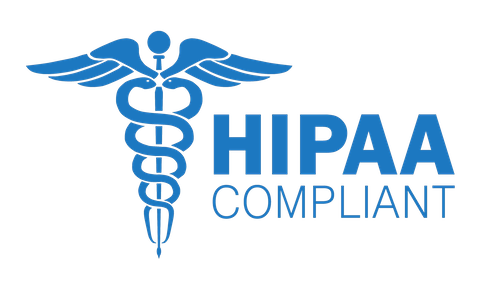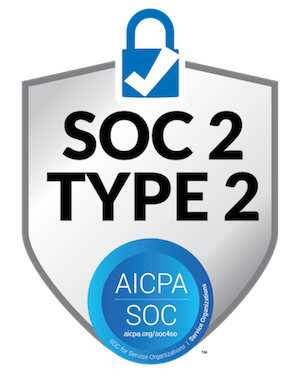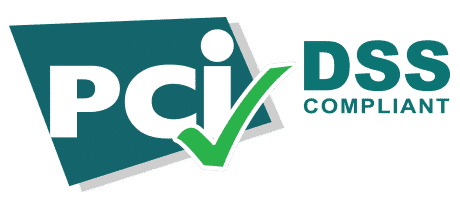
Internal Check Fraud: How to Detect and Prevent It
Check fraud has become a rampant problem for businesses across industries. According to a report by Advanced Financial Situations, it led to $1.3 billion in losses for financial institutions across the U.S. While most of the time, the miscreants are outsiders, a significant portion of the damage is a result of internal check fraud. It is a silent and costly threat to the monetary integrity and reputation of a business.
The Association of Certified Fraud Examiners attributes 16.6% of occupational scams to check fraud. It has become crucial for business owners, financial professionals, and those responsible for transactions to understand how it works. They should know what they should do to prevent it. In this blog, we will walk you through the tell-tale signs and impact of these types of fraud. You will also learn how to leverage various technologies to avoid it.

Key Takeaways
- Various types of internal check fraud can financially drain a business. It includes check kitting, check washing, the kickback method, and more.
- Your business will have to face legal consequences, reputation damage, and a decrease in operational efficiency.
- You must create a culture of fraud prevention by implementing not only security tools but also instilling a sense of accountability and ethics in your employees.
- The PostGrid Check API will serve as a first line of defense, allowing you to create, print, and mail checks in a secure environment.
What Is an Internal Check Fraud?
It happens when an insider, such as an employee, contractor, or person with access to an organization’s financial and accounting system, commits a crime. Perpetrators have intimate knowledge of the company’s operation and payment approval process.
They take advantage of the weakness of the internal issuance system to write bad checks and send money to themselves or an accomplice. It is particularly dangerous because it is hard to detect at the right time.
Common Types of Check Fraud That Take Place Internally
Check Kiting
The person takes advantage of the float time between the two banks and writes checks for an insufficiently funded or non-existent account. They deposit them into another account, which could belong to them or a co-conspirator. This creates an illusion that there is money in the account. They leverage the time gap and withdraw the funds before the rejection of the document.
Check Washing
In this form of fraud, scammers will use a chemical solution or bleach to remove the ink. After washing, they change the crucial information, such as adding a new payee name or a higher amount, and then deposit the check. It will look legitimate to banks or financial institutions, especially if the criminal processes it electronically. It will allow them to cash it without getting caught.
Kickback Schemes
This happens when an employee in a position of authority accepts a bribe. They will issue checks to pay for goods and services that are either overpriced or unnecessary. The supplier will send a portion of the purchase to the employee’s account.
Payroll Fraud
Employees with access to the payroll system will manipulate it to create counterfeit checks for non-existent accounts. They might also inflate their salaries or create duplicate entries for existing employees.
Multiple Payments on Single Invoices
This is common when employees have control over both accounts payable and accounts receivable systems. They can create duplicate checks on the same invoice. They will send one of them to the vendor and deposit the second one, and cash it.

What Are the Red Flags of Internal Check Fraud?
Unexplained or Excessive Transaction
- Look for any issuance beyond the normal expenses for goods and services.
- Watch out for a sudden increase in the volume of issuance or processing at irregular intervals.
Missing or Unaccounted-For Checks
- If you find a blank check or there is no trace of a document that you remember issuing, the fraudster might have stolen the document.
- Look for any gaps in the check sequence number. It will indicate removal, theft, or alteration.
- You should be alert when there is an unexplained voided or canceled piece in the company’s financial statements. It indicates internal theft or tampering.
Resistance to Audits
- Keep an eye on the employees who are avoiding or trying to delay audits by criticizing the process. It suggests they may be involved in the suspicious activity.
- Watch out for employees who become defensive when you question them about certain financial discrepancies, or they give an excuse.
Use of Personal and Unapproved Accounts
- Keep an eye out for someone who deposits a check into an unknown or unusual bank account. Alert your team in case the payee or vendor information does not match the company records.
- You must also look for any changes in the routing number that are inconsistent with everyday business transactions.

What Is the Impact of the Internal Check Fraud Scheme on Your Business?
Financial Losses
It is the most immediate and obvious consequence of this crime. However, aside from the direct impact, you also have to manage the additional financial burden. Take, for instance, you are hiring a third-party auditor. You will have to pay them to inspect the criminal activity and rectify the situation.
Legal Consequences
Certain industries, such as those in health, finance, and insurance, are subject to strict regulatory requirements. They must also adhere to state laws when they issue and deposit checks. Failing to prevent fraud might lead to investigation and penalties by HIPAA, SOX, or FCPA. Additionally, the affected parties, such as the vendor and the customer, can claim negligence and file a lawsuit against the company on the grounds of failing to protect their financial interests.
Decreased Operational Efficiency
Employees will be distracted by the investigation by the postal inspection service, audits, and legal proceedings. It will slow down the business activities. Additionally, you will have to direct the resources that you had kept for business growth to addressing fraud-related issues. It will delay payment to suppliers, vendors, and employees. In many cases, it might also disrupt the company’s cash flow.
Damage to Reputation and Trust
Frauds will raise questions among vendors about the organization’s financial integrity. This will make it challenging to maintain a favorable relationship and secure contracts in the future. Additionally, if news channels become aware of the criminal activity, they will make the information public. The negative media coverage will decrease customer confidence and lead to a decline in sales and customer retention.
What Are the Tools and Technologies That You Can Use to Detect and Prevent Internal Check Scams?
Security Features
Only use check stock that has built-in bank-grade security features, such as MICR lines, watermarks, microprinting, chemical reactivity, and holograms. These characteristics will prevent it from being vulnerable to fraud, as they make tampering impossible. Any attempts will make it easy for the bank and the processing team to identify that the check was fake. Our PostGrid Check API only uses checks with all these features to leave no room for manipulation.
Positive Pay System
It is an automated fraud detection system that works by cross-checking the checks someone presents with the list that the company shares beforehand. The bank will only process authorized pieces and send those with discrepancies back to the business for review. It will help catch fake checks in real-time and minimize the risk of fraud.
Read More: What Is Positive Pay?
Check Imaging System
When you deposit a check, the bank allows you to scan and upload the image on their portal digitally. They will use this image to verify the legitimacy of the document. Many systems use pattern recognition to compare the document with existing records. They will look for any signs of tampering and discrepancy, such as an altered amount or payee name.
Additionally, some systems also use Artificial Intelligence (AI). It identifies documents that demonstrate a behavior of fraud, such as unusually large amounts of money or check numbers that do not align with historical patterns.
What Should a Company Do After Discovering Internal Check Fraud?
Secure the Accounts
Report check fraud immediately to your financial institution and request that they freeze the compromised account. This will prevent further unauthorized transactions. You must also revoke access for employees to the affected system, including payment infrastructure, bank accounts, and accounting software.
Investigate the Fraud Incident
Conduct an internal audit to track the checks that are part of the fraudulent activity. If needed, hire a forensic accountant or fraud investigator to trace and identify the perpetrator’s methods. Additionally, you must also review the internal controls to determine where they fail. It is possible that the employee has unchecked access to the account, or they did not follow the protocols of the separation of duties. You must also check if there are issues with digital security, such as weak passwords or inadequate encryption.
Notify Relevant Parties
Report check fraud to law enforcement and regulatory bodies. If it involves a large sum of money or violates financial regulations, you will have to report the incident to the Federal Trade Commission. Furthermore, in case you have an insurance provider that covers financial fraud, inform them to begin the claim process.
Additionally, if the fraud affects the customers, clients, and vendors, you must notify them as well. This will give them time to secure their system from further criminal activity. It will also demonstrate your proactiveness in informing the partner, which will result in less reputational damage.
Recover Financial Losses
You must work closely with the bank to attempt to reverse the financial damage and stop the payment if the check is still processing. If you have identified the fraudster, you must take legal action against them to recover the lost money.
How Can You Build a Check Fraud-Resistant Culture Within Your Business?
Segregation of Duties
Divide the task and responsibility among different employees to prevent one person from having control over the entire check issuance process. For example, one person should issue the document, and another should approve it. The oversight reduces the temptation to commit fraud. Additionally, in case of fraud, you can trace the steps back to the person responsible for the task and resolve it quickly.
Employee Training
Educate staff on the importance of internal check fraud prevention and how to identify suspicious activity. They must also know the correct procedure to report the crime without the fear of retaliation. You must also train them on ethical conduct and elaborate on the dire consequences of committing such a crime. This will help deter internal scams.
Account Reconciliation
Regularly compare internal financial records with bank statements. It will help verify that all issued checks match the company’s records. In case of a mismatch due to an altered amount or an unauthorized payee, this process will highlight the issue. It will give you time to stop the fraud before it escalates to financial damage.
Read More: Mail Checks Online
Trust PostGrid Check API to Print and Mail Checks With Best-in-Class Security
Detection of internally created fake checks can take weeks. The longer the fraud goes unnoticed, the harder it is to recover from. This is where our Check API can come to your rescue. We offer end-to-end encryption and Role-Based Access Control. We will ensure that only authorized persons can create, print, and mail these documents. Request a demo today to see how we can help your business avoid the risk of internal check fraud.
FAQs
Can Internal Check Fraud Affect a Company’s Credit Score?
The direct impact is not immediate, but it does influence the company’s credit score. If business check fraud leads to a significant monetary loss, it will reduce the company’s cash flow and impact its financial health. The reduced liquidity will lead to missed payments on loans, lines of credit, and other obligations. This will negatively impact the credit score. Similarly, if the scam becomes public, lenders will view the company as high-risk. It will lead to high interest rates and reduced credit limits. Both these aspects will lower the credit score.
Can an Employee Commit Check Fraud Without Physically Accessing the Checks?
Yes, they just need access to the accounting software or the banking system to create fake checks. They can change the amount or payee information to forge a fraudulent transaction without needing the physical copy.
Are Digital Checks Less Prone to Internal Fraud Than Paper Checks?
It is not the check type but the system that generates, prints, and mails them that makes them an easy target for scammers to commit criminal activity. Weak access control and a lack of monitoring will allow fraudsters to initiate fraudulent pieces, modify account details, and bypass fraud detection systems.
How Often Should Companies Conduct Internal Audits to Prevent Check Fraud?
This depends on the size, complexity, and risk profile of the business. For example, if you are a small business, you can conduct quarterly or semi-annual audits. The scope will be narrow, focusing on reviewing bank statements and verifying high-risk transactions. However, if you are a large business, you must conduct monthly audits. This will ensure that there is constant monitoring of the business operations, mainly because multiple departments from various locations might be responsible for check processing and payments.









